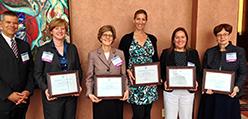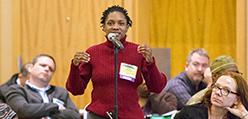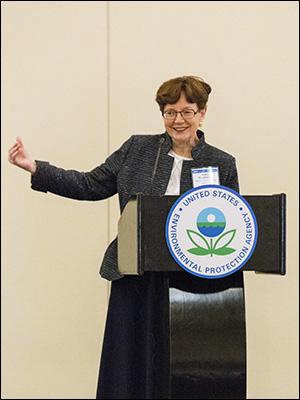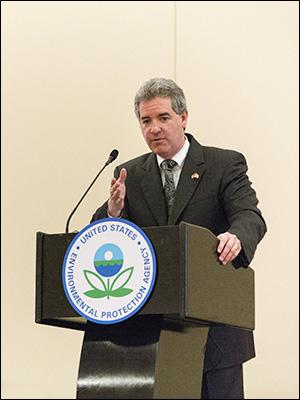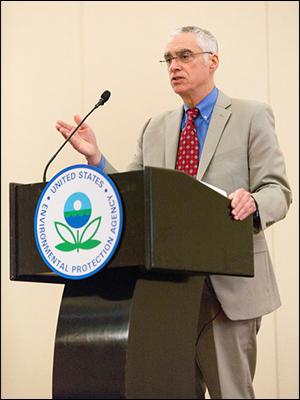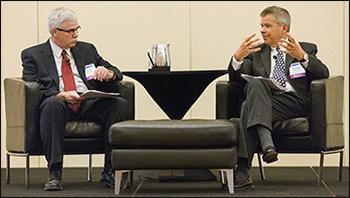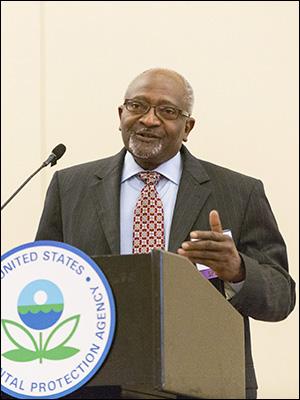Port Stakeholder Summit - April 2014
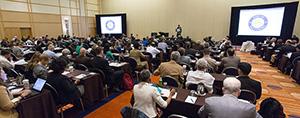
Advancing More Sustainable Ports
On April, 8, 2014 EPA's Office of Transportation and Air Quality hosted the Port Stakeholders Summit in Baltimore. The Summit served as a venue for port professionals, experts and stakeholders to address the many opportunities and challenges faced by our nation’s ports and neighboring communities. Meeting Summary and Summit Agenda
Opening Remarks
Kathy Broadwater, Deputy Executive Director, Maryland Port Administration
Shawn Garvin, Regional Administrator, EPA Region 3
Keynote
Bob Perciasepe, EPA Deputy Administrator
National Conversation on Ports: Insights
Chris Grundler, Director, EPA Office of Transportation and Air Quality
Dennis McLerran, Regional Administrator EPA Region 10
Community Engagement:
Historical Perspectives and the Path Forward
Robert Bullard, Dean, Barbara Jordan-Mickey Leland School of Public Affairs, Texas Southern University
Panels
Strategies for Improving the Environmental Profile of Ports
Moderator: Susan Monteverde, American Association of Port Authorities
Michael S. Derby, Wallenius Wilhelmsen Logistics
- Rick Cameron, Port of Long Beach, Sustainable Emission Reduction Strategies (PDF) (23 pp, 2 MB, April 8, 2014 )
- Susan Wierman, Mid-Atlantic Regional Air Management Association, Inc., Lessons from the Mid-Atlantic Voluntary Dray Truck Replacement Program (PDF) (24 pp, 405 K, April 8, 2014)
- William Nurthen, Port of New York/New Jersey
Measuring Port Environmental Performance
Moderator: Elena Craft, Environmental Defense Fund (Moderator)
- Lee Kindberg, Maersk, Environmental Metrics for Shipping and Ports (PDF)(13 pp, 966 K, April 8, 2014)
- Haifeng Wang, International Council on Clean Transportation, Environmental Recognition Program for Ports (PDF)(20 pp, 480 K, April 8, 2014)
- Fran Inman, Majestic Realty, Port Sustainability from a Business Perspective (PDF) (10 pp, 110 K, April 8, 2014)
- Stephanie Jones Stebbins, Port of Seattle, Measuring Environmental Performance (PDF)(21 pp, 891 K, April 8, 2014)
Incentivizing Environmental Improvements
Moderator: James Jack, Coalition for Responsible Transportation
- Rick Gabrielson, Target Corporation, A Shipper’s Perspective (PDF) (7 pp, 152 K, Apriil 8, 2014)
- Ken Kellaway, RoadONE Intermodal Logistics, State of the Union in the Drayage Industry and the impact on Green Fleet Initiatives (PDF)(23 pp, 2 MB, April 8, 2014)
- Andy Dillon, Clean Energy, Natural Gas in Port Operations (PDF) (23 pp, 1 MB, April 8, 2014)
- Antonio Santos, Manufacturers of Emission Controls Association, Federal Funding and Incentives for Clean Diesel Projects (PDF)(15 pp, 111 K, April 8, 2014)
Port Expansion – Illustrative Case Study
Moderator: Jerry Boese, Ross Strategic, Port of Arbor Case Study (PDF)(27 pp, 325 K, April 8, 2014)
- Sacoby Wilson, Community Engagement, Environmental Justice, and Health
- Gerry Coyle, Evans Delivery Company Inc.
- Erica Holloman, Greater Southeast Development Corporation
- Amy Goldsmith, New Jersey Environmental Federation
- John Esposito, Ports America
- Heather Wood, Virginia Port Authority
- Peg Hanna, New Jersey Department of Environmental Protection
- Frank Esposito, U.S. Coast Guard
Recap Work Groups Actions and Discussion
Allen Schaeffer, Diesel Technology Forum
Poster displays provided by:
Baltimore Port Alliance | Diesel Technology Forum | Donaldson Company, Inc. | Foss Maritime | Hug Filtersystems | Manufacturers of Emission Controls Association | Port of Seattle
Executive Steering Committee
EPA’s Office of Transportation and Air Quality would like to thank all members of the Executive Steering Committee, whose contributions were essential to the success of the Summit. Members represented the following organizations:
American Association of Port Authorities | Coalition for Responsible Transportation | Diesel Technology Forum | Environmental Defense Fund | International Council on Clean Transportation | Low Country Alliance for Model Communities | Manufacturers of Emission Controls Association | Maryland Port Administration | U.S. EPA Office of Transportation and Air Quality | U.S. EPA Office of Environmental Justice | U.S. Department of Transportation

